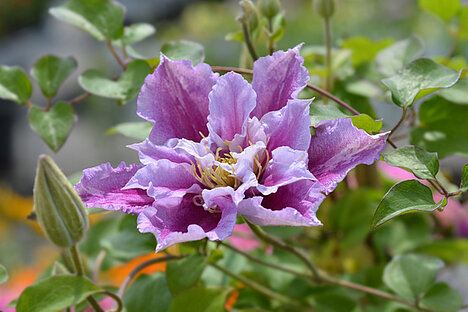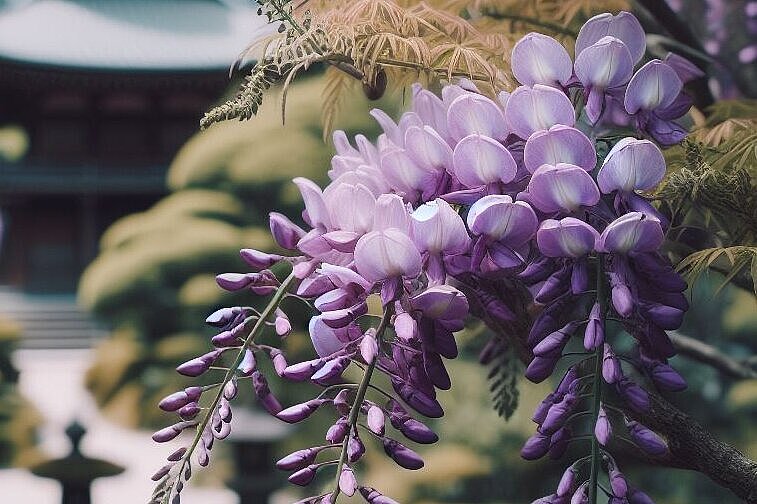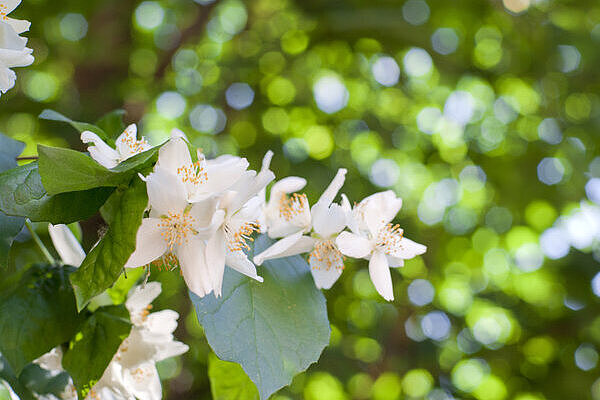Clematis

What is clematis?
Clematis is a genus of around 300 species of perennial plants from the buttercup family. They originally come from the temperate zones of the northern hemisphere, but are now found all over the world. Clematis grow as climbing plants or shrubs with mostly feathery leaves and large, eye-catching flowers. Depending on the species and variety, the flowers can be white, pink, purple, blue or red and have different shapes such as bells, stars or bowls.
In homeopathy, clematis is mainly used as a remedy for complaints of the nervous system, skin and urinary tract. The homeopathic preparation is made from the fresh plant, which is harvested before it flowers. The plant contains various ingredients that can have an effect on the body, e.g. protoanemonin, anemonin or glycosides.
How does clematis affect dogs?
Clematis can have both positive and negative effects on dogs, depending on how it is used and how sensitive the dog is to it. Below are some of the pros and cons of clematis for dogs.
Benefits
- Clematis can help dogs suffering from nervousness, anxiety or restlessness. The plant has a calming effect on the nervous system and can relax and balance the dog.
- Clematis can also be used for skin problems such as eczema, itching or inflammation. The plant has an anti-inflammatory and healing effect on the skin and can alleviate symptoms.
- The clematis can also help with urinary tract infections or bladder stones. The plant has a diuretic effect and can promote the excretion of fluid and toxins. It can also protect and soothe the mucous membranes of the urinary tract.
Disadvantages:
- Clematis can cause poisoning in dogs if eaten in large quantities or over a long period of time. The plant contains protoanemonin, which can cause irritation of the gastrointestinal tract, salivation, vomiting or diarrhea. In severe cases, convulsions, paralysis or respiratory distress may also occur.
- In dogs that are sensitive to the plant, clematis can also cause allergic reactions. The plant can cause skin rashes, swelling or itching. In rare cases, anaphylactic shock can also occur.
- Clematis can also interact with other medicines or remedies and strengthen or weaken their effect. Therefore, a veterinarian should always be consulted before clematis is fed to dogs.
Clematis is a genus of perennial plants from the buttercup family. The plant is used in homeopathy and can have positive effects on dogs, such as calming the nervous system, relieving skin problems and helping with urinary tract infections. However, it can also cause poisoning or allergic reactions if used in large quantities or in sensitive dogs.
If you notice any signs of hypersensitivity or poisoning in your dog, you should see your vet immediately. We are not a substitute for a vet, but we try to be as accurate as possible. Every dog reacts differently and we recommend you get a second opinion or consult your vet if in doubt.
Stay healthy and take good care of your four-legged friend!😊
Similar to Clematis
Unfortunately, ivy is poisonous to dogs. Both the leaves and the berries contain saponins, which can lead to symptoms of poisoning. These are vomitingdiarrheasalivationtremblingshortness of...
Garden honeysuckle (Lonicera caprifolium) belongs to the honeysuckle family (Caprifoliaceae) and is native to southern Europe and North Africa. It is a woody perennial plant that can climb up to 10...
Wisteria (Wisteria sinensis) belongs to the legume family and originally comes from China. It is also known as wisteria or Chinese wisteria. It has large, racemose inflorescences that are blue,...
Jasmine blossom is the flower of plants from the jasmine genus (Jasminum), which belongs to the olive family (Oleaceae). There are over 200 species of jasmine, which are mainly found in the...



